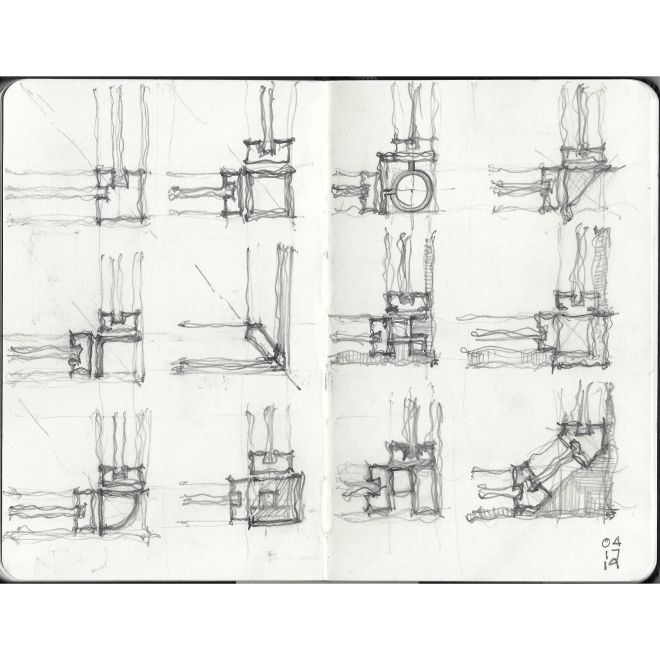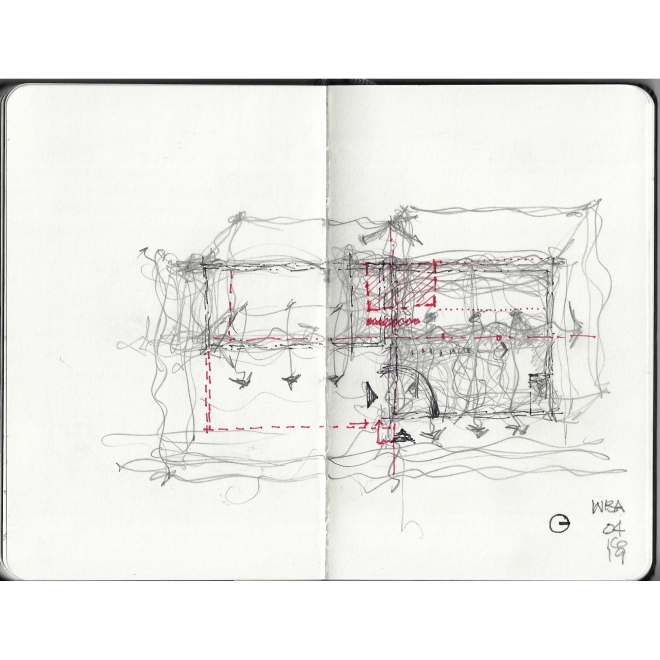
It’s been over a year. It might be another.
Today’s post is sharing a response to a struggling student honestly looking for answers to how one designs. How are historic works of architecture conceived?
I have an answer. I have no answers. I’ve been an architect for approaching thirty years.
Here is my response.
“I’ve been spending time considering a thoughtful response to your questions, but I’m not sure I can give you an answer that will satisfy you.
Besides the explanation given in the blog and the 37 comments that followed, I would have to say be patient.
You referenced several well-known projects, but I can say with confidence that they came about from experience and a team of people. If one looks at any complicated object or structure, it is unfair to ask how I can do that. One could not conceive of an automobile, phone, or doghouse without concluding that people designed them one part at a time thinking of the result. Even a detailed drawing was made one line at a time.
Ideas are only ingredients to design. They are both useless and priceless. Ideas are joined by a concept and tested by a process. Keep the idea or remove it? What is the goal? What is the overriding concept? One can sketch all day, but without a method to see past that, the ideas will end there. Usually, clients help by being the arbiter of designs – yes to this, no to that.
During my teaching years, so many students would persistently search for ideas hoping that a single thought would be the answer. They wouldn’t listen to me when I would recommend corralling ideas by developing a concept. At some point, one has to stop searching and begin to work. Make a decision. Many beautiful buildings have simple ideas and simple concepts. Still, the architect(s) was (were) skillful in composition, thoughtful in understanding the site and climate, knowledgeable about construction and technology, and could perceive the design in 3D.
Be patient and find someone to work alongside. Copying isn’t bad if one can learn from it rather than take advantage of others. Give credit where it is due.
No one created music by jotting a few notes on a page. Oh wait, Mozart did, but no one else can do that.
All the best on your pursuit.”
Share what you know.



I was lucky enough to cross paths with this book early on when asking the same question. THE UNIVERSAL TRAVELLER by Don Koberg + Jim Bagnall
Can not recommend this book highly enough. a great foundation and basis to build your design/problem solving skills.
Thanks Bill, I’m always looking for more books to read.
i had Don Koberg my 5th year at Calpoly SLO.
He was a Great , Thoughtful , professor. As a 3rd year student I had. a design crit from him . I was scared to death! but also honored to be selected. His book was almost required reading by us. It stresses the journey (process) not the final goal . His book and more so Don had a great influence on me and the many students in the “5th year open option” design lab. I still have the book nearly 45 years later and revisit it from time to time
when I need a recharge. RIP Don
That’s two votes for the book. I had better get busy ordering it.